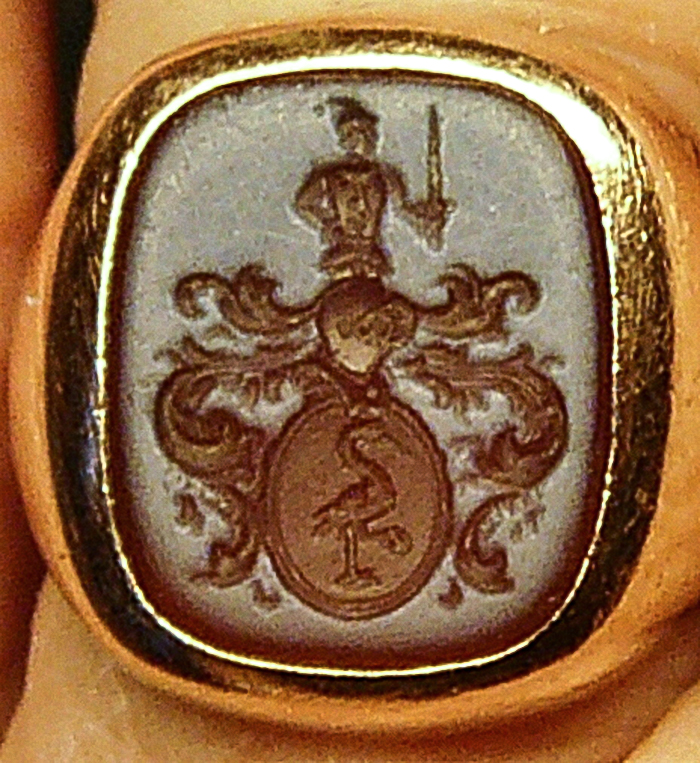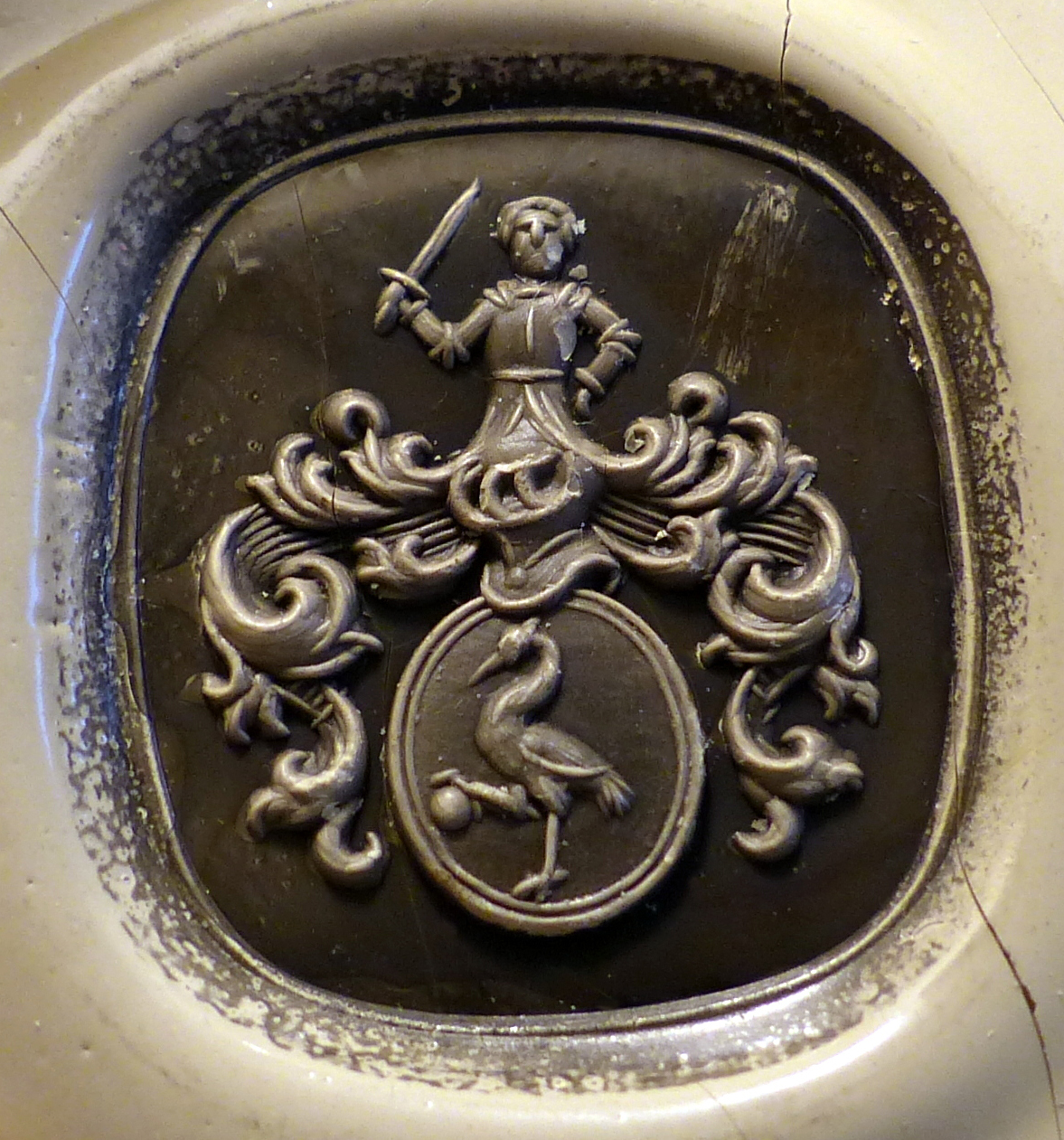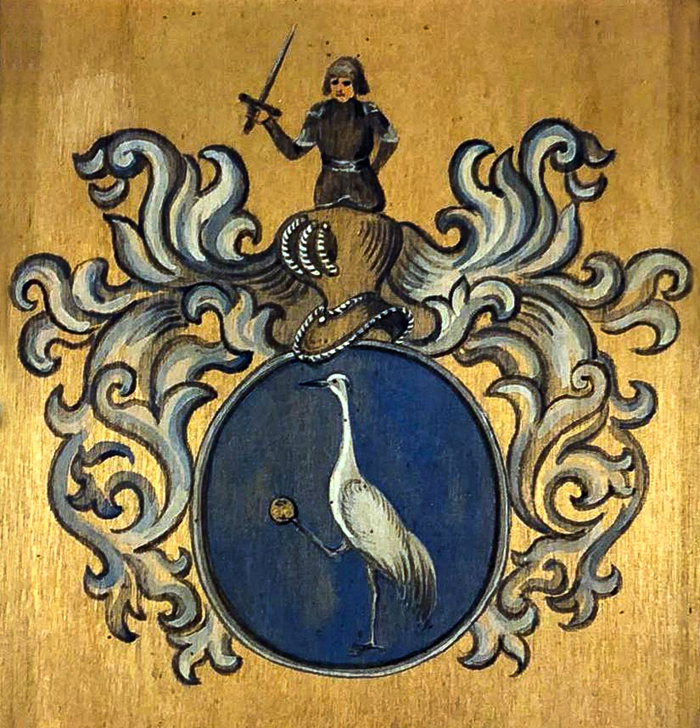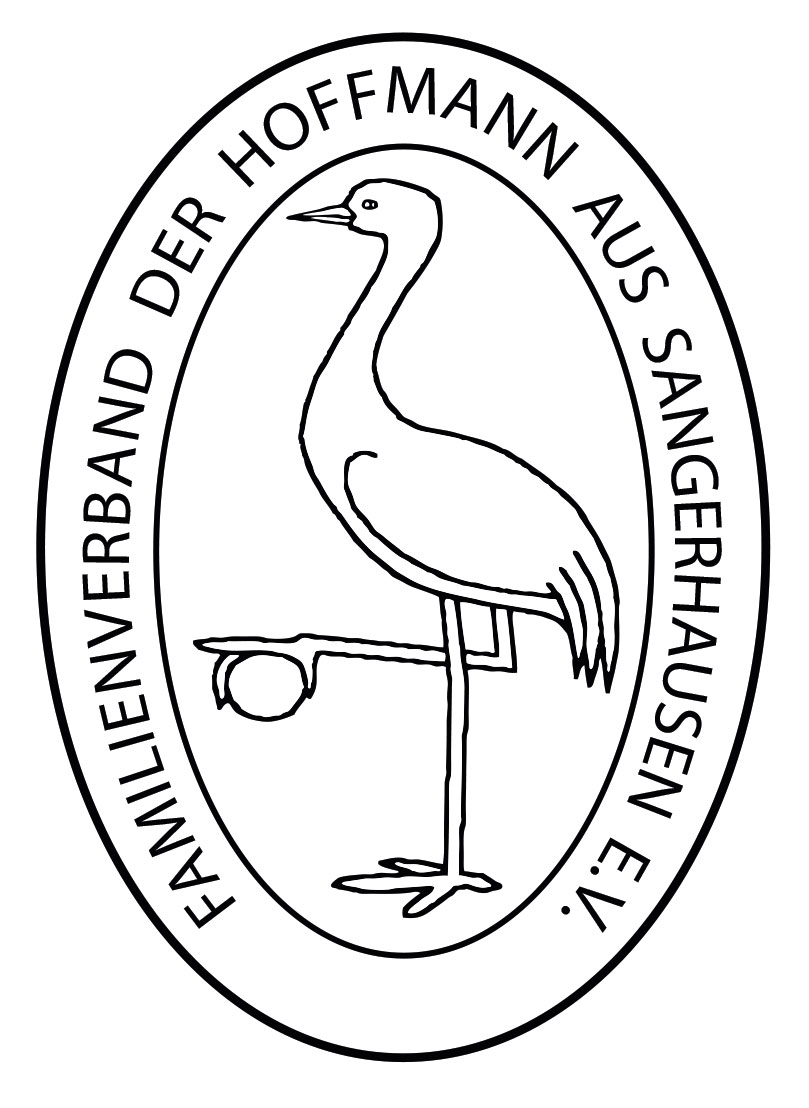The Crest of the Hoffmann Family
Background
In his research, Olaf Welding discovered that our ancestor Basilius Hoffmann adopted a personalized seal sometime between 1595 and 1609. His sons Basil II, Philipp II and Petrus and their descendants adopted individual seal images. It was not until three generations later that the seal images, which were not to be regarded as family crests, became a permanent family crest, which is still used in this form today: It is the coat of arms of Johann Georg Hoffmann, which is first documented in 1789.
Description of the crest
In a blue shield a right-facing silver crane, holding a golden ball with its right foot; crest: a growing beardless man, dressed in blue with golden cuffs, collar and belt, wearing a blue gauntlet with a golden cover, swinging a silver golden sword with his right hand, his left hand resting on it; helmet covers blue-silver. (The blazon follows O. Welding).
Note
The language used to describe crests is a complex language that is often not immediately comprehensible to anyone not familiar with it. Therefore, it is completely correct if the “right-facing” crane is actually facing left because heraldists do not think from the viewer’s perspective, but from the crest bearer’s (as if the crest were a protective shield). This professionally provided description (blazon) of our crest is the only authoritative source for the correctness of its depiction. The depiction, for example on a seal ring, is subject to the freedom of the artist. It can therefore be done in the Baroque style, Art Nouveau style, etc., or according to individual preferences. The attempt to derive a tradition from the unique artistic depiction of the crest as an oval on the seal impression by Johann Georg Hoffmann is therefore incorrect.
Meaning
The image of the crane with the golden ball is likely a homage to the city of Narva, the hometown of Johann Georg Hoffmann, where a crane in the form of a weather vane from the 17th century “sits” on top of the town hall tower. It appears on many Baltic crests. The depiction is based on a legend by Aesop, according to which the flocks of cranes send a bird to keep watch at night, holding a stone so that it does not fall asleep. This is because the stone would fall on its foot in its sleep and wake it up (Wilhelm Busch also used this theme in his poem “The Clever Crane”). This representation type, known as ‘grus vigilans’ (vigilant crane), has been present in the art history as a symbol of vigilance since the 12th and 13th centuries, appearing in bestiaries (animal books).




